A single day Brecks Tour today. It was cold and grey, with light winds and thankfully it remained dry inland. Not ideal conditions, and it felt a long way from spring!
We met at Lynford and made our way down towards Santon Downham to start the day. We checked out a nearby clearing first, to see if we could find any Woodlarks. A Nuthatch started calling as we walked in through the gate and we could see it in the top of an oak behind us. A Great Spotted Woodpecker called too, further over, and then started drumming briefly.
Then a Woodlark started singing and we spotted it fluttering high over the clearing. A second Woodlark flew in with it, calling, presumably the female, and seemed to drop down out of view. The male continued to sing, fluttering round overhead with its broad, rounded wings and short tail. Eventually it dropped down into a tree on the edge of the clearing where we could get it in the scope.
Back across the road, we walked down the ride the other side. A flock of tits was making its way through the trees – we stopped to look at a couple of Coal Tits in the pines first, and then picked up a flock of Long-tailed Tits the other side of the path. We could hear a Marsh Tit calling and then picked up a Treecreeper in one of the pines, working its way upside down along the underside of a side branch. It flew back to the trunk and then walked down the top of another side branch.
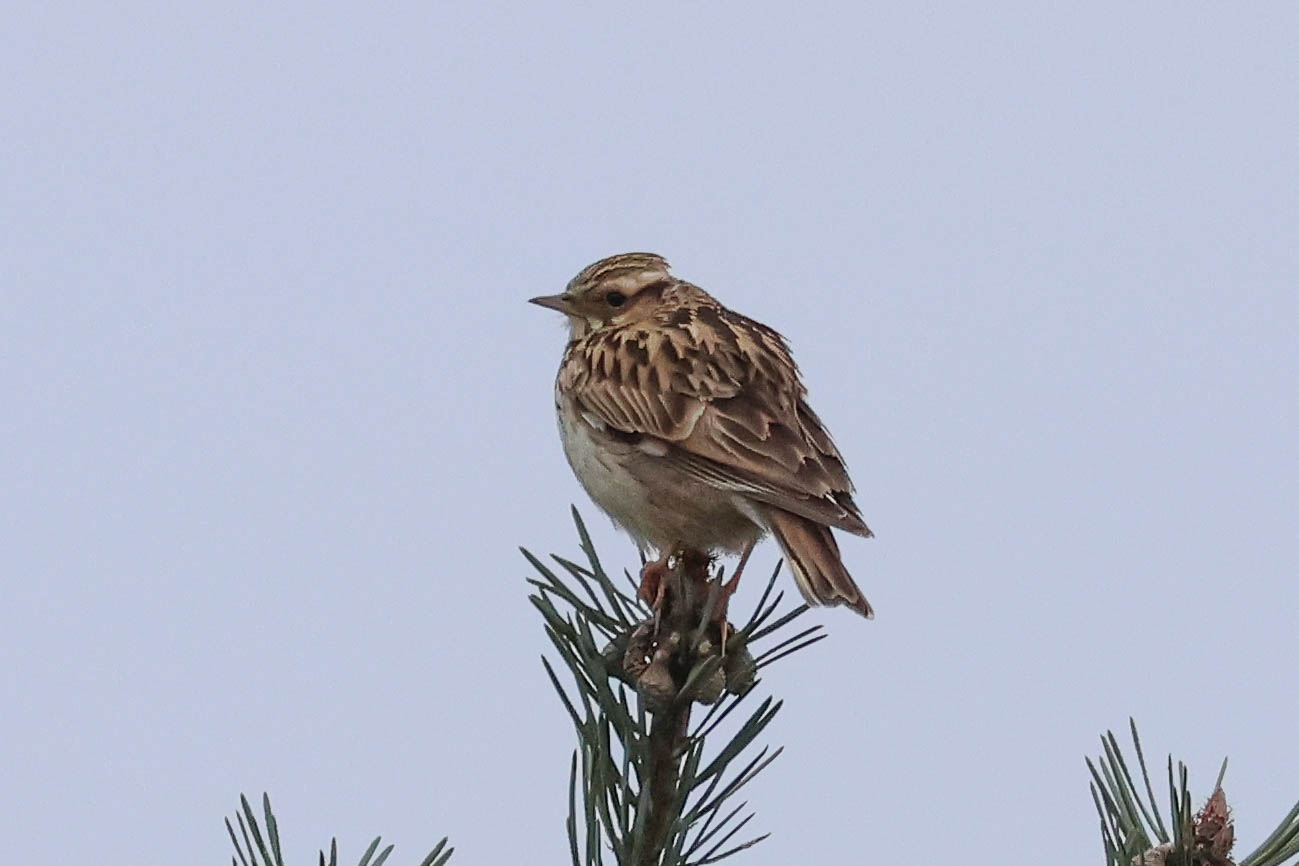
We had just started to walk on further when we heard another Woodlark calling, which flew overhead and appeared to drop down some distance ahead of us. It was swiftly followed by three more Woodlarks which circled round above us, two flying off but the third dropping down towards where the first had gone. We walked on to a high point in the path where we could see where they seemed to go down and were just scanning the rough ground when one of the group noticed one in the top of a low pine tree by the railway track. We had some nice views of it through the scope before it flew off, followed by the other Woodlark which had been lower down in the same tree out of view.
A Kestrel was perched in the top of a bare tree the other side of the railway and a Yellowhammer flew up and landed in an oak tree ahead of us. We cut through under the tracks and made our way down towards the river. A couple more Nuthatches and another Great Spotted Woodpecker called from the trees, a Song Thrush was singing and a Stock Dove was whooping off on the Suffolk side, a Water Rail squealed and a few Siskins flew back and forth but otherwise it was fairly quiet along the riverbank today. With the colder temperatures it seemed like spring had been put on hold for the time being.
We didn’t have much time to wait here this morning, as we had lots to try to pack in, so when we got to the furthest group of poplars we stopped to listen for a couple of minutes. We were hoping for more woodpecker activity, but there was nothing doing, so we turned to walk back. On the way, a Marsh Tit was calling from the trees ahead of us and we stopped to watch it flitting through the branches.
As we got back to the railway underpass, a couple of Redpolls flew over calling. We could hear a Woodlark calling again and saw it drop into the back of an oak tree the other side of the tracks. We walked through and got it in the scope, great views now. A smart male Yellowhammer was perched above it.
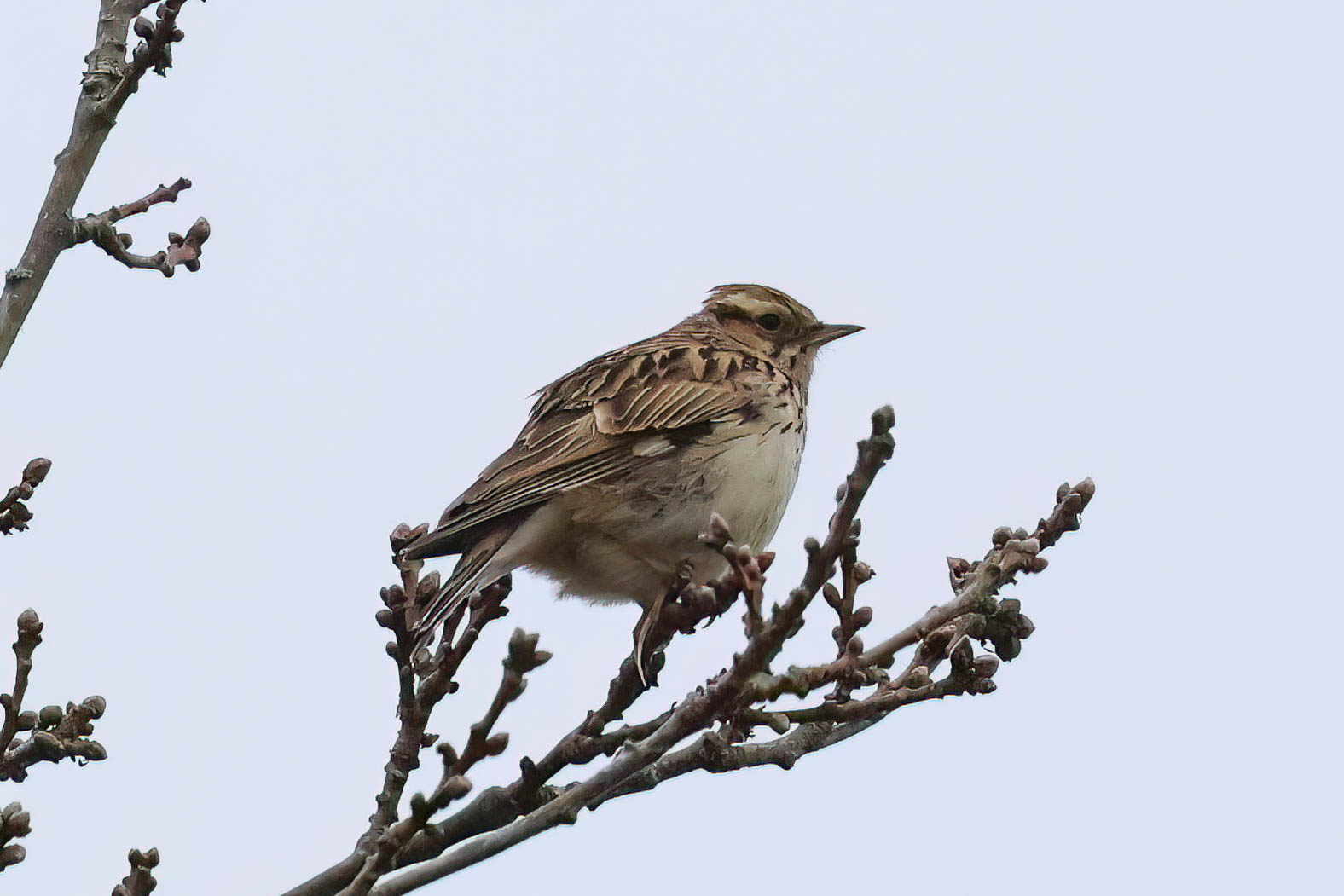
Back in the minibus, we headed off into the forest to look for Goshawks. With no warmth to generate any thermals and almost no wind to offer an alternative source of lift, the conditions didn’t look very promising. There were no Common Buzzards up at first either, and when two did circle up our hopes rose but they didn’t get very high (neither the Buzzards nor the hopes!) and quickly gave up.
In these conditions often the most we can hope for is for a Goshawk to briefly break cover low over the forest, but then one of the group spotted a raptor high in the sky. It was a Goshawk and it was displaying – slow flapping at first, but then it started to rollercoaster, swooping down turning up and stalling, then repeating. Another Goshawk then appeared lower down and closer, an adult male with its undertail coverts puffed out ‘tail flagging’. We got it in the scope, but unfortunately it dropped down again quite quickly. The higher bird suddenly dropped back down towards the trees and disappeared too.
It was a good start, but hard to get on the higher bird and only brief views of the lower Goshawk. We waited a bit longer and a young male then circled up distantly out in front of us. It was easier to get this one in the scope and it stayed in view so we could all get a look at it in the scopes this time. Even though it was further off, we could see the paler mottling in the upperparts as it banked.
There were a several Brown Hares in the fields, at least 2 in front of us and 5 behind. There were a few Fieldfares around, some of which landed in the trees and others flew over tchacking. A mixed flock of Chaffinches and Goldfinches flew round and landed in a bush by the road, before dropping into the cover crop in the field the other side. A Woodlark started singing and we found it fluttering round over the field beyond the trees behind us, before it dropped down to the ground and went quiet.
It was time for lunch, so we drove back towards Lynford, with the heater on full in the minibus to try to warm up a bit. It was slightly more sheltered here and we were mostly able to sit out on the picnic tables in the car park. Afterwards, we walked down through the arboretum. We stopped at the gate, but there was no seed out on the ground, at least our side of the new camo netting screen which has appeared across the ‘tree tunnel’. We could just see several Chaffinches and Yellowhammers beyond it.
We carried on down the hill. Someone had been and refilled all the feeders by the bridge, and spread lots of seed on the pillars, and lots of birds were coming and going. We stopped to watch – we had great views here of Nuthatch and Marsh Tit in particular.
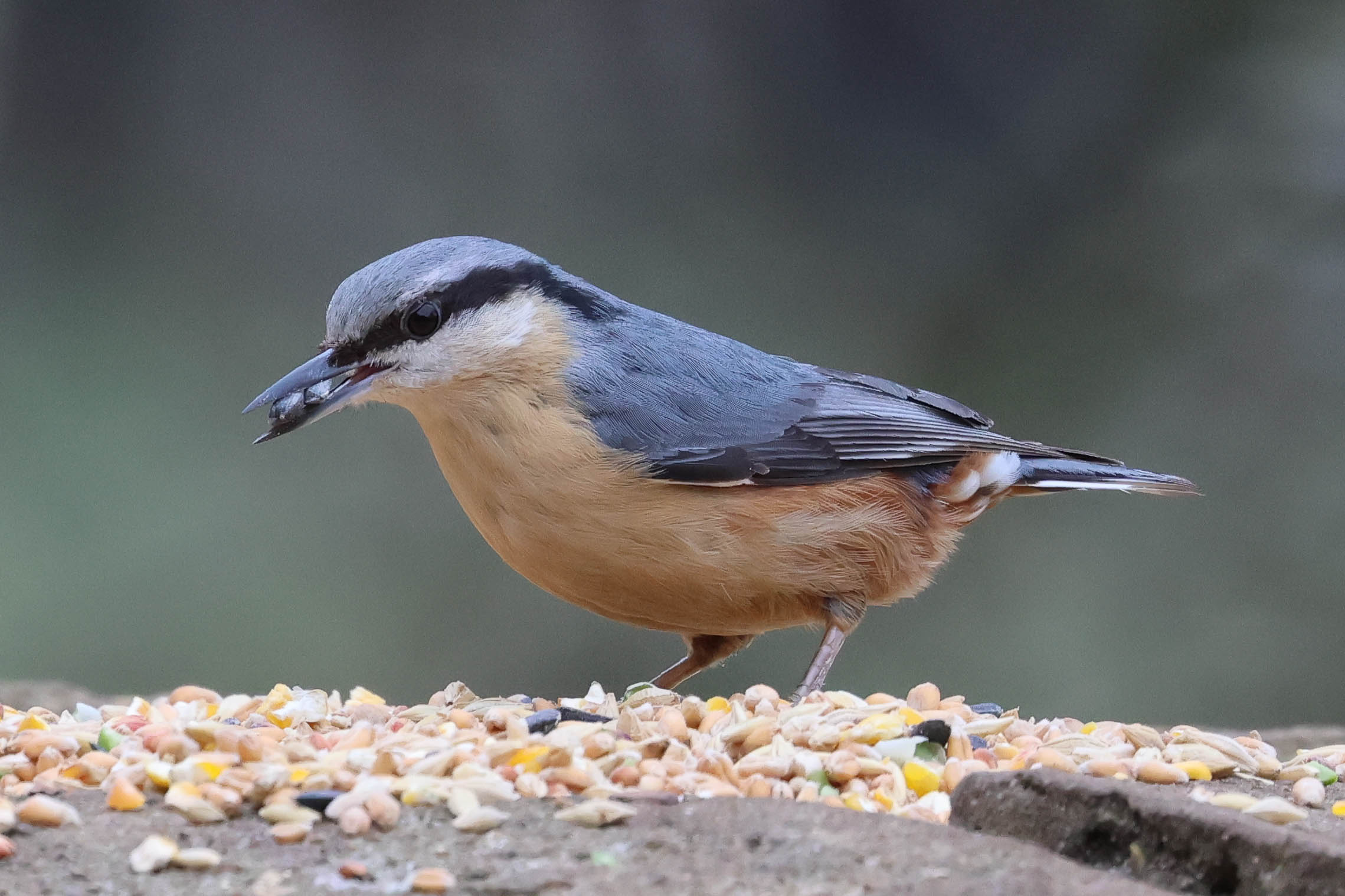
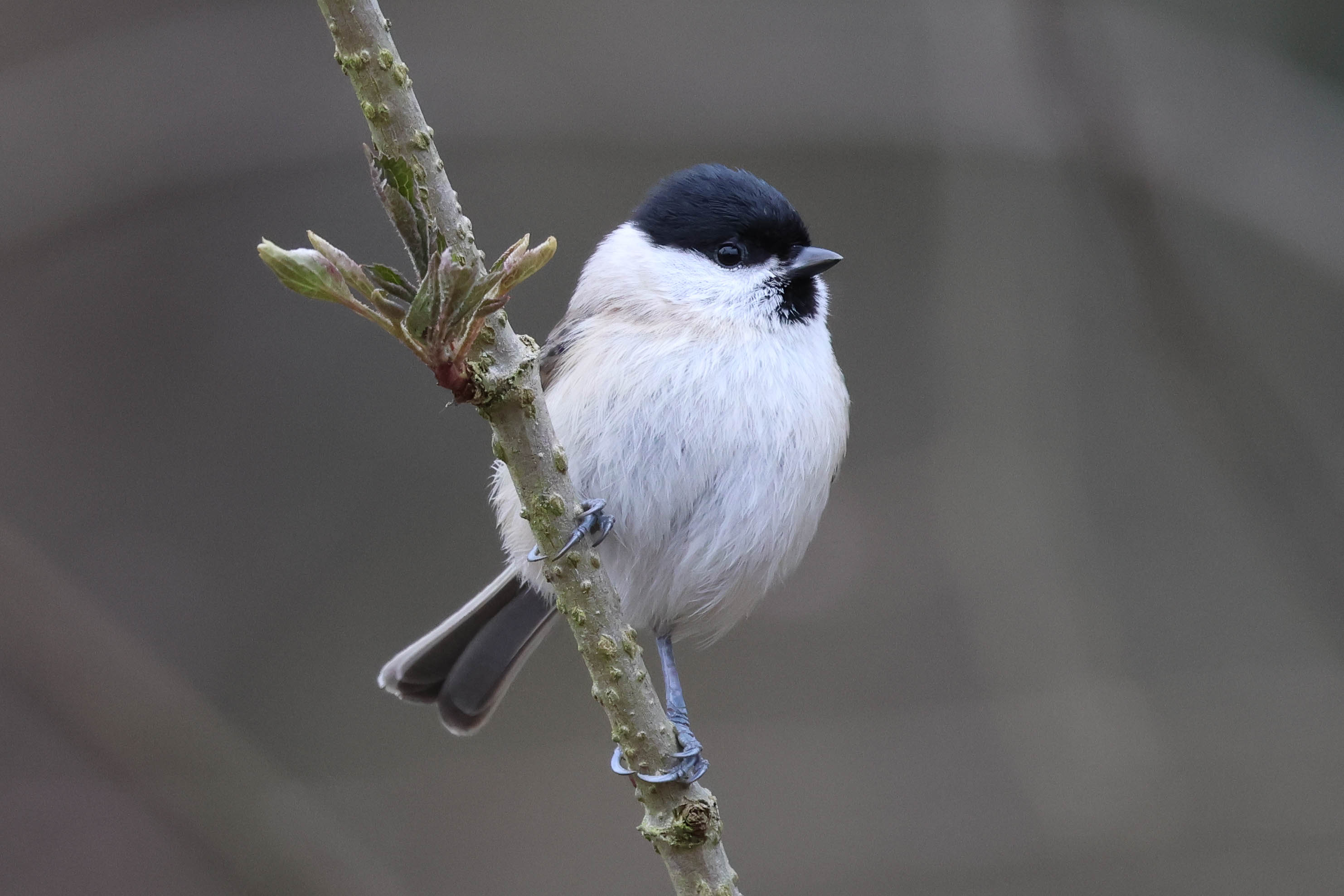
The Hawfinches have been going in to roost early recently, so we carried on down to the paddocks. There was no sign of any in or under the trees, so we positioned ourselves to wait to see if they would come in. A couple of Mistle Thrushes were in the ash trees in the middle and flew back to the firs beyond, where the male started singing from the very top of one. Redwings kept coming and going, perching in the ashes or hornbeams, feeding on the grass – through the scopes, we could see their pale supercilia and orange-red flanks. There were Goldfinches and Greenfinches in the trees too. A Great Spotted Woodpecker kept calling from the pines behind us and eventually showed itself.
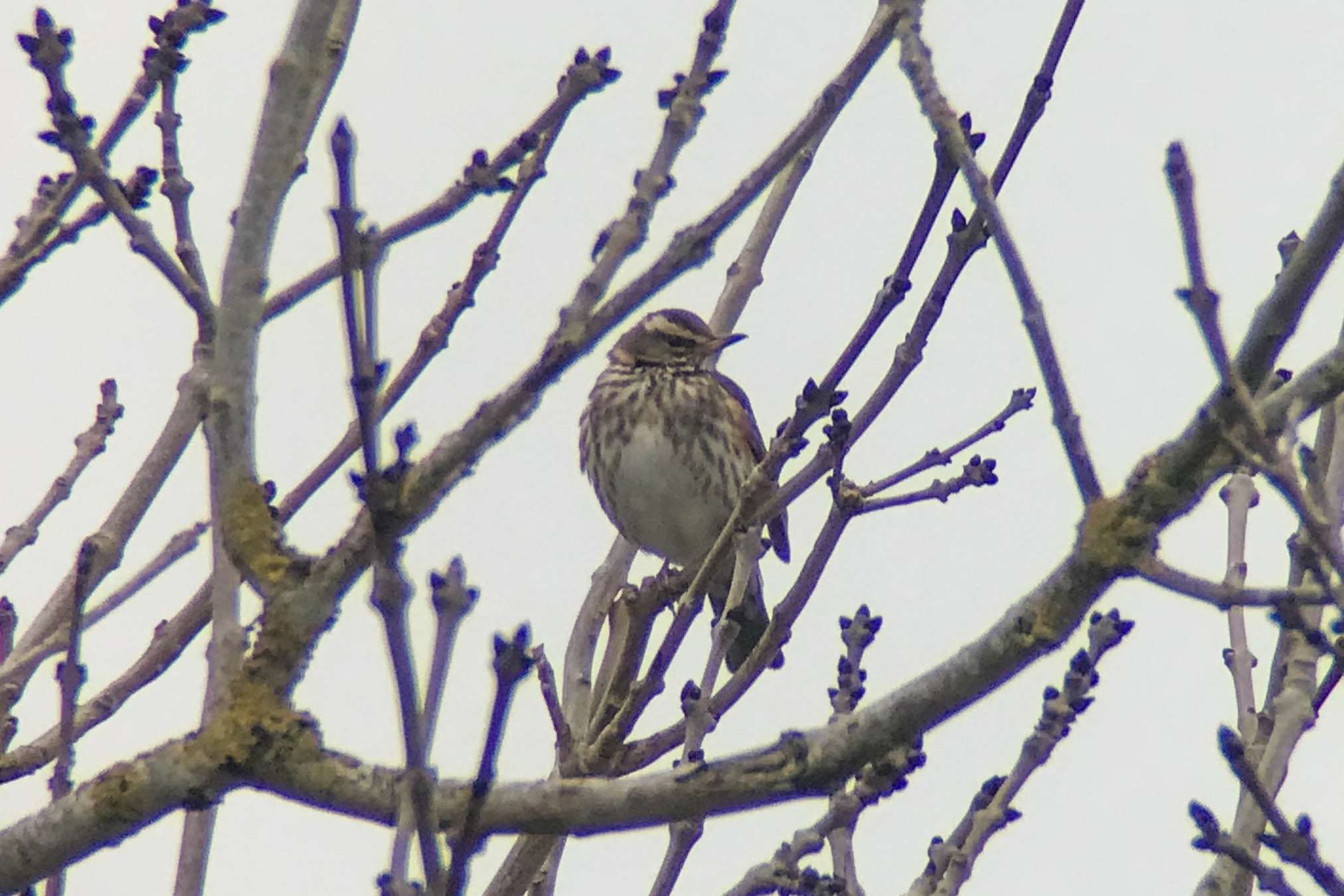
The Hawfinches kept us waiting today. Eventually, one appeared in the top of the firs behind the paddocks. It stayed just long enough for us all to get a quick look in the scope, before it dropped down – even if its cherry stone crunching bill was hidden by a fir branch. Shortly after, two more flew in to the firs, a male and female this time and we had a better look at them and a chance to admire their bills. They flew across and disappeared into the trees.
We walked round to the far end of the paddocks, to see if we could find them again, but they had probably gone in to roost already. Then we picked up another Hawfinch, a male in the tops and when it flew it seemed to drop round on the other side of the trees. They will sometimes sun themselves here before going to roost, so we hurried over, just in time to see one in the firs quite close but before we could get the scope on it, it disappeared down into the trees. We cut through the plantation, and looking back across the paddocks we could now see another male Hawfinch in the top of the deciduous trees the other side.
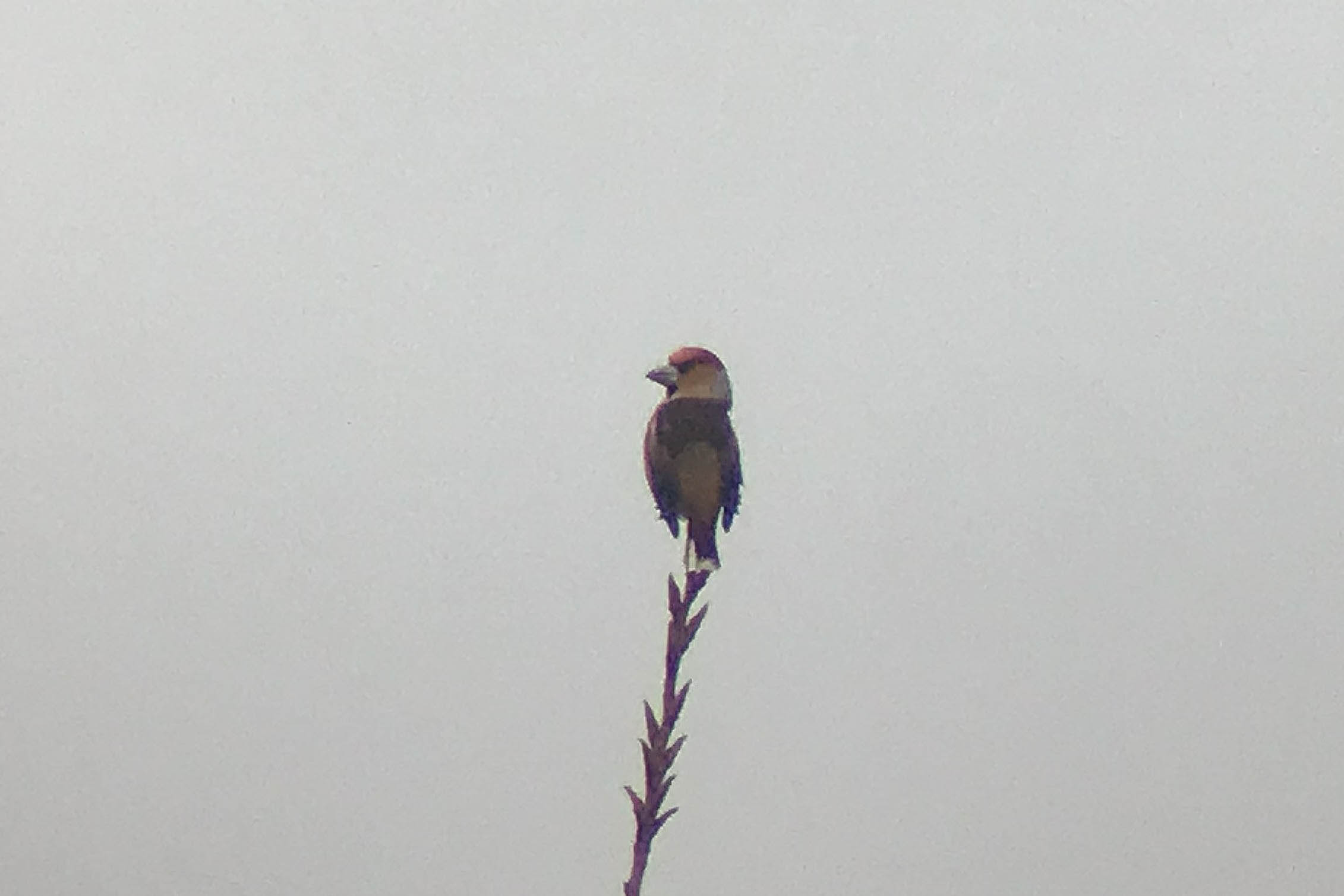
Continuing on round to the lake, we walked underneath a large flock of Siskins feeding in the alders above our heads. There were a few Gadwall with the Mallards on the water, along with a Mute Swan, both additions to the day’s list. A Moorhen was on the grass beyond and a Little Grebe laughed at us from deep in the reeds. Back at the bridge, we stopped to watch the tits coming to feed on the seeds again.
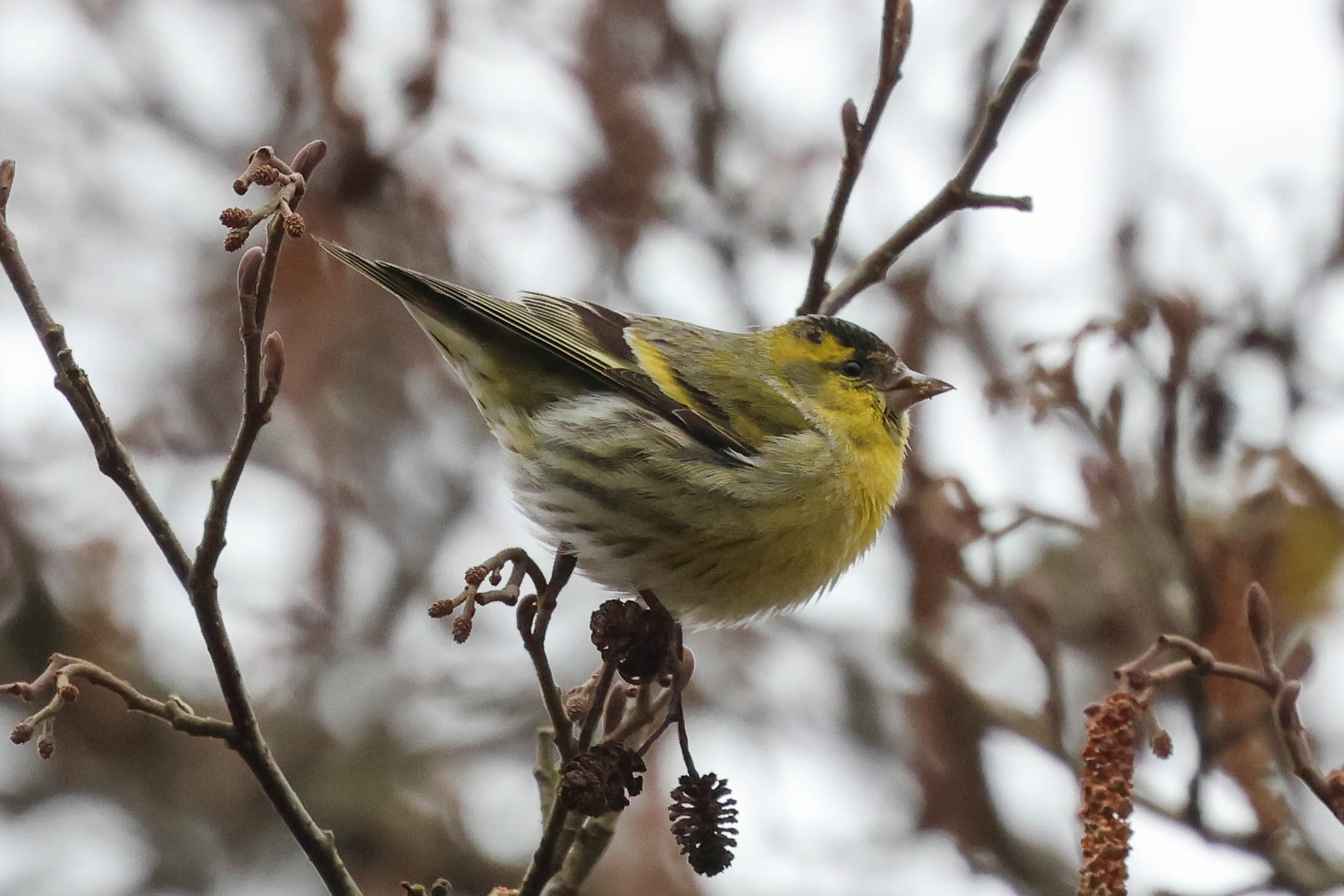
Then it was time to head back to the car park and retreat to the warmth of our respective vehicles for the journey home. Despite the conditions, we had enjoyed a successful day out.
















